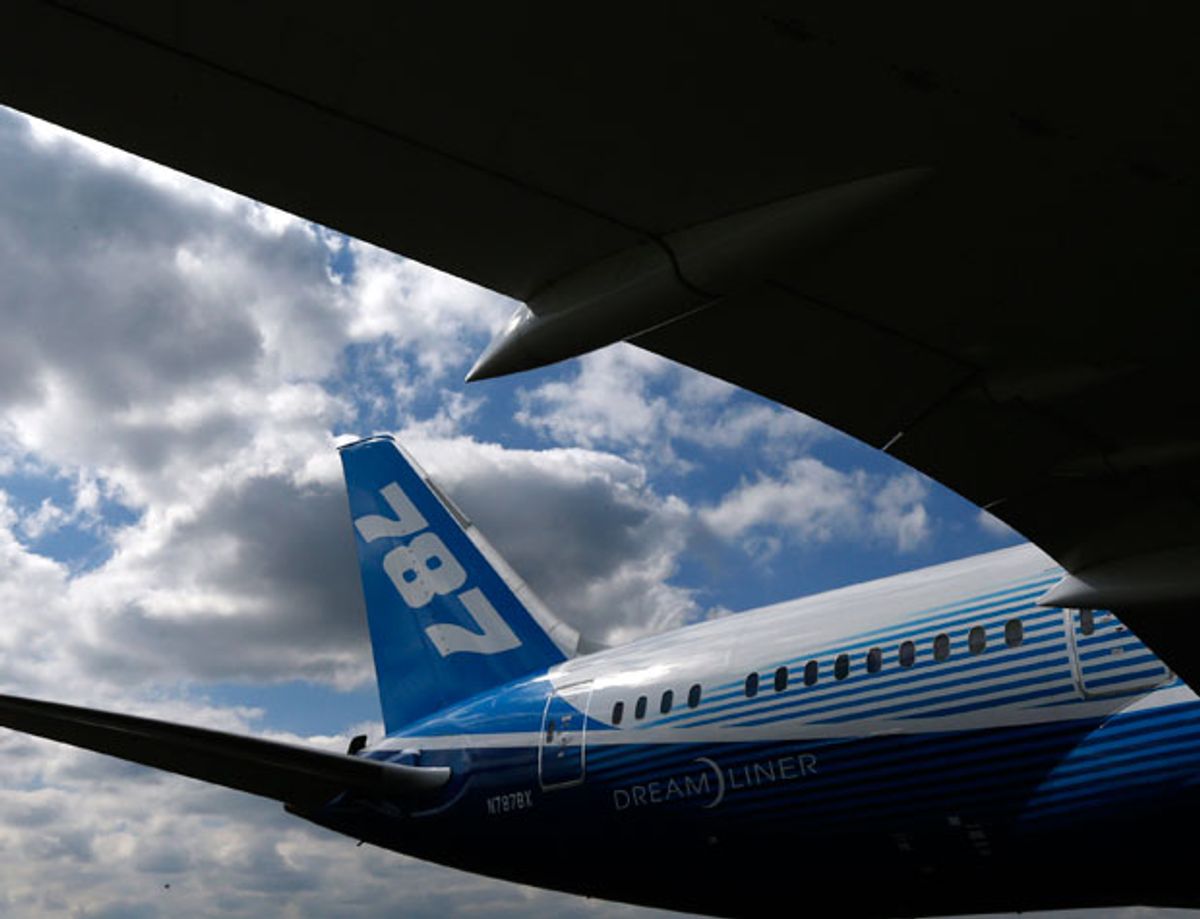This week, the U.S. National Transportation Safety Board (NTSB) convened a two-day investigative hearing to examine a battery fire that broke out in a Boeing 787 Dreamliner on 7 January at Boston’s Logan International Airport. In the coming weeks, Dreamliners will be returning to service around the world after being fitted with Boeing’s fix to its batteries, which has been approved by the Federal Aviation Administration. Yet some questions remain—notably, what the root cause of the fire was—even though the Dreamliner’s battery problems have now been given their most thorough public airing to date.
During the hearing—in which Boeing noted they expected one battery overheating event every 10 million flight hours but instead got two in 58 000 flight hours—Boeing and its subcontractors faced some scrutiny about the new battery fix. NTSB chair Deborah Hersman, for instance, pointedly asked a panel of Boeing engineers: “So even without understanding the root cause, which you and [Boeing Commercial Airplanes vice president Mike] Sinnett have acknowledged, you feel the mitigation efforts guarantee safety?”
Later in the same session, Boeing systems engineer Jerry Hulm replied to a similar question by noting that, yes, the cause of the battery fires is still a mystery. But, Hulm said, Boeing did not need to solve the mystery to fix the problem.
Boeing’s investigators, he said, are “leaning toward” the conclusion that the battery fires were caused by internal short circuits within the battery. But, he added, for the purpose of the fix [PDF], Boeing has tried instead to mitigate the effects of short circuits, building metal structures that could contain a burning battery and vent any smoke or other gases from the plane. Other testimony examined the new electronics and the battery’s improved ability to handle overcharging and overdischarging, which Boeing testified could also lead to battery fires and overheating events.
Michael Pecht, director of the University of Maryland’s Center for Advanced Life Cycle Engineering, says people should pay attention to the counterexample Airbus has provided. In response to Boeing’s battery woes, Airbus announced in February that it had ditched its plans to use lithium-ion batteries in its forthcoming A350 and instead switched to aviation-industry-standard nickel cadmium cells.
“This is a huge deal,” Pecht says. “What they’re really saying is lithium-ion technology is premature to use in systems where safety is such a big issue, especially if they don’t know all the failure mechanisms.”
Donald Sadoway, a professor of materials chemistry at MIT, is also critical of Boeing’s battery fix. “The response of Boeing is one of containment, not mitigation,” Sadoway says. “This is not a fix. It is an attempt to minimize damage in the event of a fire, in contrast to an attempt to prevent fire.”
One particularly troublesome lithium-ion battery failure stems from microscopic impurities inside the battery. As Spectrum previously reported, recent research has pointed to a weeks- or months-long process of charge and discharge cycles that slowly breaks down the impurities and forms a metallic dendrite inside the cell, which could short-circuit the battery and lead to a runaway fire. That failure mode is much harder—though according to the research, still possible—to diagnose.
During this week’s NTSB event, a member of the hearing’s technical panel asked Boeing’s battery maker—the Japanese firm GS Yuasa—how it “ensures that there is no contamination that gets introduced into the battery during manufacturing.” Takahiro Shizuki, manager of GS Yuasa’s large-scale lithium-ion battery division, said the batteries are manufactured in a clean room with rigorous outside inspection regimens. He added that finished cells are also individually inspected via CT scan.
Ralph Brodd, veteran battery consultant from Broddarp of Nevada, based in Henderson, says the Dreamliner’s recent difficulties bring to mind battery-fire problems with laptop computers in the 1990s.
In the laptop fires, he says, much of the solution came from the suppliers improving their manufacturing process to remove iron-oxide impurities. “You learn that your supplier cannot produce the material with iron contamination in it,” says Brodd. And just as the early laptop makers did, Boeing and GS Yuasa need to step up their batteries’ manufacture and design too.
“There’s no reason to think, if properly made and implemented, they are not safe,” Brodd says of the Dreamliner’s batteries.
On Thursday, the day after the NTSB hearings concluded, the FAA officially cleared the Dreamliner to return to regular passenger service once its batteries are fixed.
Margo Anderson is the news manager at IEEE Spectrum. She has a bachelor’s degree in physics and a master’s degree in astrophysics.



